Homepage / News Details
The importance of sewage treatment for South Africa
- Categroy:News
- Author:
- Origin:
- Release Time:2019-05-10 16:23
- Views:
【Summary】The importance of sewage treatment for South Africa
The importance of sewage treatment for South Africa
【Summary】The importance of sewage treatment for South Africa
- Categroy:News
- Author:
- Origin:
- Release Time:2019-05-10 16:23
- Views:
International Online News (Reporter Zhang Wei): March 22 is World Water Day. For African residents, the most precious thing is water. According to Baimas Taal, executive secretary of the African Council of Ministers of Water, there are currently 340 million people in Africa who cannot drink clean water and 500 million people living in areas with poor sanitation; water shortages have become a threat One of the main crises for the survival of African people.
Africa can be said to be a “water-deficient continent”. The 2011 drought in East Africa caused people to be shocked. In the worst drought in 60 years, more than 12.4 million people were affected, and the malnutrition rate of children under five years old And the mortality rate is extremely high.
In fact, Africa has been in a state of general water shortage for many years. The UN-Water Report, released at the Sixth World Water Forum conference held last year, reports that there are still 2 billion people in the world who are unable to drink clean drinking water, most of whom live in Africa. The water level in Africa, the largest freshwater lake in Africa, has been reduced by one meter from the early 1990s. The South African Business Report pointed out that if measures are not taken in time, water resources in South Africa will be exhausted by 2050.
However, according to statistics, almost 36% of the clean water in South Africa has been lost due to the water leakage caused by the old water supply system facilities. To this end, the South African government recently launched a “reduction of water leakage plan” to train 15,000 personnel to overhaul the pipeline. At the same time, South Africa has signed a seawater purification cooperation agreement with Iran to try to increase the source of clean water.
The situation in South Africa is only a microcosm of many African countries. In fact, not only in the dry period, drinking water is an extremely precious resource in the African region in the year when rainfall is relatively normal. In rural areas, a daily life burden for many African women and children is to travel more than 10 kilometers to queue up at public water points. About 3.1 million people worldwide die from diseases caused by drinking unclean water every year. Currently, 1/7 of the world's population lacks clean water, compared with 1/2 in Africa. Even in a large city with more than 15 million people in Lagos, Nigeria, only 40% of the population use clean tap water due to restrictions on facilities.
Africa has abundant groundwater resources, but the development costs are high. According to estimates by the African Development Bank, about 11.5 billion euros (1 euro or about 7.34 yuan) of funds are needed each year for improving water supply systems and water purification facilities in Africa. Similar dilemmas are everywhere, and in India, La Punjab, the world's most rain-stricken place, people have to worry about clean drinking water after the rainy season.
In such cases, sewage treatment becomes critical.
Releate News

Time of issue : 2024-04-22 08:56:03

Time of issue : 2024-04-15 16:52:27

Time of issue : 2024-04-09 10:13:04
CONTACT US
PRODUCTS
CALCIUM HYPOCHLORITE
TCCA
SDIC
BCDMH
FEEDBACK
© 1999-2018 北京网站建设有限公司 Copyright © 2012-2022 All Rights Reserved Powered by www.300.cn 冀ICP备12012949号 津公网安备 12010302002173号 Seo tag

